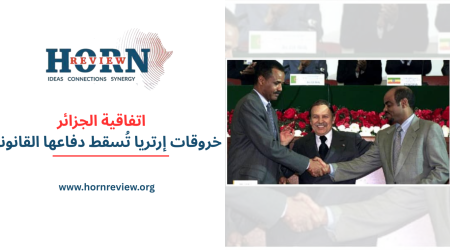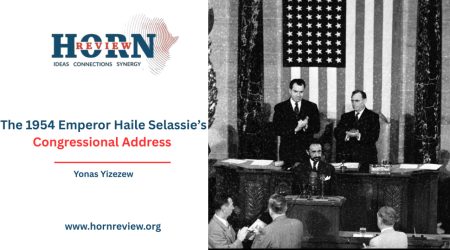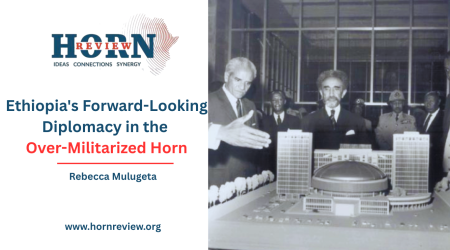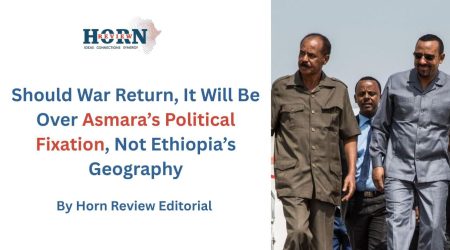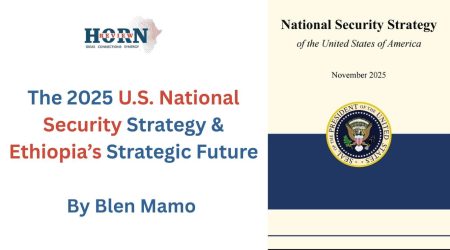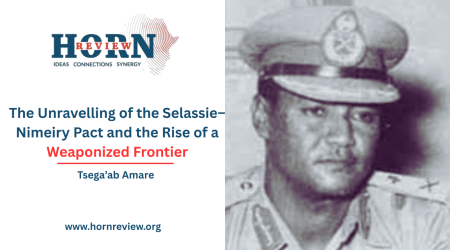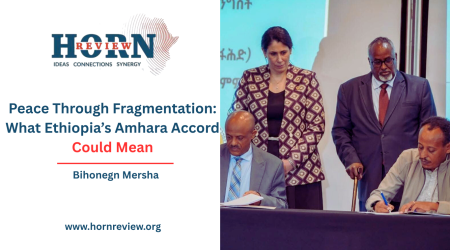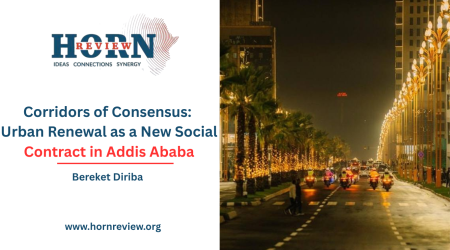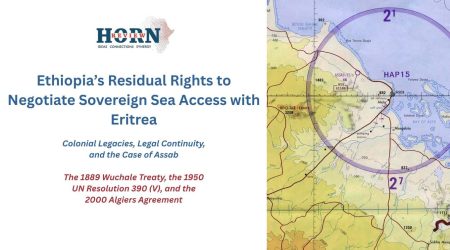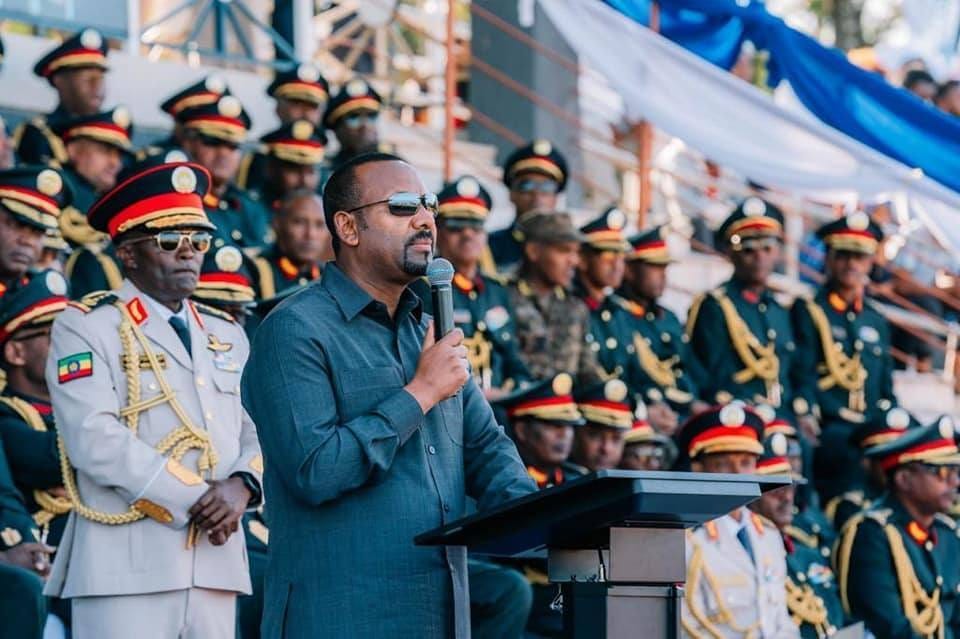
22
Aug
The Labyrinthine Path to Ethiopia’s Prosperity and Consolidated Democracy
By Abdi Zenebe (PHD), Deputy Director, Institute of Foreign Affairs
From Upheaval to Reform
In a world increasingly shaped by failed transitions, populist backlash, protracted conflicts, trade skirmishes and geopolitical fragmentation, Ethiopia’s reformist project remains an outlier. This is not a story of perfection. Ethiopia’s political transition is riddled with contradictions, fatal-confrontations, setbacks, and resistance. But it is also one of audacity: a national experiment to move beyond ideological dogma, zero-sum identity politics, collective shame of poverty and institutional paralysis toward integrative pluralism, endogenous sovereignty, enhanced strategic autonomy and post-ideological pragmatism. Ethiopia’s transition is complex and often misunderstood. Its trajectory defies the revolutionary ruptures that have marred the Middle East and parts of Africa. Instead, Ethiopia offers a rare case of state-led attempt to rescue a fragile polity from implosion through constructive reinvention rather than destructive overhaul.
Seven years into Ethiopia’s historic transition, at a domestic level, the nation continues to navigate a complex metamorphosis, redefining its political ethos, developing nascent economic frameworks, restructuring security paradigms, reframing socio-cultural norms, values, and perspectives, and revamping its foreign policy posture. This transition, far-reaching in both scale and scope, aspires to institute lasting, stable, democratic and strong regime by an inclusive system that is created with the participation of the public, civil servants and elites of different categories. By transforming normatively obsessed governance structure that used to reject the socio-cultural fabric of the country towards servant leadership, built on the bases of empirical politics model that is anchored in clemency, fraternity, social justice, freedom, and multinational unity. At the regional and global levels, it aims to cultivate strategic partnerships within the Horn of Africa and advocate for multilateralism on the world stage. By actively rejecting polarization, extremism, and ideological binaries, the reform process has, against daunting odds, persisted, resilient in ideal, pragmatic in method, and unwavering in its commitment to democratic consolidation and national prosperity.
Today as Ethiopia enters the middle phase of the transition, which is more inclined towards institutional entrenchment, it becomes imperative to reexamine the architecture of its transition. This assessment must not only appraise the domestic and international variables at play but also differentiate ephemeral turbulence from structural transformation. It is critical to avoid conflating the emergence of anti-democratic actors or the reappearance of embedded systemic challenges with the failure of reform itself. Rather, such frictions are the inevitable byproducts of any authentic transition. This essay deploys a comparative political analysis, layered through systemic, regional, and national lenses, to explore the Ethiopian journey through the politics of transition.
Ethiopia in Comparative Transition Politics
To contextualize Ethiopia’s current moment, one must view it within what Vincent Bevins – If We Burn: The Mass Protest Decade and the Missing Revolution (2023)- aptly termed the “protest decade,” a period from 2010 to 2020, which is marked by spontaneous, decentralized uprisings what he termed as ‘horizontalizm’ that erupted across five continents. From Cairo to Caracas, from Hong Kong to Santiago, mass movements sought to unseat entrenched establishments. Yet, as history now records, most of these uprisings appraised considering the ‘prefiguration’, which is about what the movements aim to achieve, happen to either collapsed into authoritarian retrenchment or spiralled into state failure.
We can take the immediate neighbourhood to the Horn as a reference to elaborate the regression and delirium that befall on the Middle East. Particularly, following the Arab Spring or Arab Awakening. If we take Egypt, for instance, the fall of Mubarak should have ended a military rule in the country. However, after limited experiment under democracy the country returned to a military rule in a very interesting U-turn. Similarly, the penetration of external actors either in the name of negotiation or facilitation or protection further exacerbated the security crisis in Syria, Yemen and Liby- to mention a few.
In contrast, Ethiopia’s reform, while imperfect and embattled, remains a rare example of a transition that has not deviated from its prefigured aims. It continues to pursue democratic consolidation and socio-economic renewal, even as peer nations such as Sudan, Yemen, Egypt, and Libya grapple with growing delirious extra-regional actors’ penetration, widening political vacuum, regression towards military takeover, security implosion, or chronic democratic deficit. Ethiopia’s reform may yet be fragile, but it has not fractured.
Averting Collapse Through Reform
On the eve of two thousand eighteen, Ethiopia teetered perilously close to the precipice. A brittle state by most indices, ravaged by economic malaise, institutional exhaustion, mass disillusionment, and escalating insecurity, its political ecosystem had devolved into a zero-sum contest fuelled by ethnic federalism and a revolutionary democratic orthodoxy. The Ethiopian People’s Revolutionary Democratic Front, long insulated by authoritarian inertia, faced a legitimacy crisis of existential proportions.
Yet, unlike previous transitions, where revolutionary fervour fed retributive purges and structural decimation, the current reformist wave opted for a reconciliatory course. The ascension of Abiy Ahmed marked a pivot from dialectical antagonism to integrative vision. The prevailing reformist philosophy, Medemer, offered a radical alternative to the dichotomous discourses that had long haunted the Ethiopian polity.
It rejects the “either or” paradigms of identity versus nationhood, ethnicity versus Ethiopianity. It promotes complementary pluralism, embracing both particularist identities and overarching unity. Its political expression, the establishment of the Prosperity Party, ended the exclusionary legacy of the Ethiopian People’s Revolutionary Democratic Front, granting formal political participation to previously marginalized communities and insurgent actors.
The current administration’s ideals imprint on Ethiopia’s political and economic landscape has been transformative. Domestically, it translated mass outrage into civic hope, opening avenues for the disarmament and political reintegration of armed groups. Institutionally, it signalled a break from the violent political cycles that defined both the Derg and Ethiopian People’s Revolutionary Democratic Front eras. Where past regimes purged and dismantled predecessors in acts of revolutionary vengeance, the current reformers have prioritized systemic rehabilitation over punitive rupture.
In foreign policy, the country eschews client state politics in favor of subregional integration. Unlike Somalia, Yemen, Libya, or Syria, where external interventions derailed democratic aspirations, Ethiopia has resisted international militarization, asserting an indigenous path to sovereignty and reform. Joining BRICS reflects a multilateral and multipolar reorientation and a strategic hedging against over dependence on any single global power.
Economically, the reform has abandoned mono-sectoral obsession, adopting a multilayered, homegrown development model that simultaneously targets agriculture, manufacturing, mining, and tourism with modernisation (technology) as cross-cutting variable. Debt restructuring, citizen centric policies, and technology led modernization now anchor national economic planning.
Cultural Residues, Confronting Political Decay and Overcoming Regression
Ethiopia is a country that wrestles with the burdens of democratization without a fully cultivated democratic culture. Ideally, everyone is expected to constructively contribute to the consolidation of democracy in Ethiopia. Despite major progress observed in the political development level, there are still severe challenges. The risks of premature liberalization, without the counterweights of robust institutions, judicial independence, or civic education, are well documented across the developing world. At the structural level, while substantial gains have been made, Ethiopia’s journey remains vulnerable to political regression. The ghosts of illiberalism—zero sum politics, historical revisionism, and the mythologizing of victimhood—continue to haunt the national discourse. Horizontal conflicts, often rooted in long standing structural inequalities or identity-based claims, present persistent obstacles to unity and institutional maturation. On its part the Ethiopia’s democratic architects must therefore be inclusive and couple liberty with literacy, rights with responsibilities, and participation with patience. Strengthening and building democratic structure also demands shaping the role of political players.
Building democracy is a collective and purposeful endeavour of Ethiopians. It is not the sole responsibility of a single body or an individual. All of us have a role to play; we are living in a exceptional age that shouldn’t be taken for granted. Often more is expected from political players. However, the call and critic to commit to democratic values unwarranted and legitimate are disproportionately negative towards the ruling party and the premier. The progress towards a mature democracy often mitigated by failing to expose undemocratic practices of all political players. Largely, one visible missing element is the absence of scrutiny on different political players outside of the ruling party. The skewed attacks on the ruling party bedevil and fail to provide the comprehensive picture that would help to examine the situation in greater depth. A combination of discursive institutionalism (Schmidt 2008, Hay 2006) and accountability theory (Bovens 2007, Schedler 1999) helps, to a degree, to appraise multiple actors and debunk unfair blame shifting while assessing whether critics or groups claims are legitimate or exploitative. Here, it is very essential to note that constructive critics of the party in power is vital for the development of democracy that is conscious of the incipient stage and the fault-lines.
At the agency level, however, opposition and media may scapegoat the government while avoiding scrutiny of their own influence. Like many transitions in Ethiopia, contending political forces, including opposition groups, media, and activists, often evade responsibility while disproportionately blaming the young government, especially in fragile political environments. There are few frameworks to analyze critical political actors who may contribute to instability while avoiding accountability. Democratic consolidation theory elucidates the nature of political actors during transition periods, including established elites and opposition parties, who often sabotage new governments to delegitimize them. In connection to this, rather than helping democracy take root, so called contenders, though not all, engage in blame shifting, where it is common for them to critique governance failures but neglect their own role in destabilization through actions such as boycotts or misinformation. The Ethiopian current political landscape is filled with political players who are obstructionists, failing to provide constructive solutions and focusing on undermining the incipient democracy and its practices.
Similarly, through discursive institutionalism, we can observe how different actors in Ethiopia are occupied with ‘cheap talk’ or rhetorical attacks without policy alternatives. These actors are eager to amplify blame and deny their own responsibility, attempting to deflect it. This can be easily seen through a simple analysis that examines whether critics’ narratives are manipulative or fact based. Veto players, such as opposition, military, and business elites, can block reforms but blame the government. In bad faith bargaining, some actors pretend to cooperate while sabotaging progress. Prescription involves identifying if critics are negotiating in good faith or exploiting transition chaos, particularly in post conflict or post authoritarian transitions with entrenched elites.
Toxic polarization and negative partisanship theory (Mason 2018, McCoy & Somer 2019, Abramowitz & Webster 2016) best describe the different actors witnessed in current Ethiopia, illustrating how political actors gain by fueling hatred rather than governing. Some opposition groups in Ethiopia today avoid policy debates, instead radicalizing supporters against the government. Conflict entrepreneurship, which comes in the form of politicians and media, profits from perpetual crisis. Accountability Theory, or the Principal Agent Framework, can be applied to further understand these dynamics.
A critical hurdle for Ethiopia’s intellectual and political elite is the persistence of anachronistic discourse, outdated ideological frameworks that no longer correspond to Ethiopia’s sociopolitical realities. The incessant rehashing of debates rooted in nineteen sixties student radicalism, Marxist nationalist binaries, or ethnocentric determinism stifles innovation and undermines contemporary statecraft.
Ethiopia’s political class must now embrace post ideological pragmatism, one that transcends inherited antagonisms and cultivates a new social contract informed by justice, dignity, and pluralism. Only by discarding these intellectual residues can the country engage authentically with the twenty first century global order.
Navigating a Constrained Geopolitical Arena
In an increasingly volatile geopolitical environment, Ethiopia must balance ambition with realism. The Horn of Africa remains a contested zone, where great power rivalries intersect with regional grievances. Navigating this terrain requires agility, strategic patience, and diplomatic imagination.
Ethiopia’s commitment to non-alignment and multilateralism, undergirded by its homegrown ideological compass, positions it uniquely. The contemporary Ethiopian foreign policy aims to promote harmony between cooperation and competition. In doing so, it prioritizes the significance of building communication that encourages carving out common interest and reducing security dilemma. At a regional level, Ethiopia is focused today on establishing a strategic partnership, moving away from the previously skewed relationships that revolved around mutual destruction. Yet this path demands resilience against both external coercion and internal sabotage. It also necessitates a consistent foreign policy doctrine, rooted not in episodic reaction but in long term national interest.
Collective and Deliberate March Toward Democratic Consolidation
Ethiopia’s labyrinthine road toward democracy and prosperity is neither linear nor immune to regression. Yet, its relative success amidst a global landscape littered with failed transitions deserves recognition. Institutional fragility, performance efficency, and geopolitical constraints remain formidable challenges, but they are not insurmountable.
In a collective journey towards democracy the true measure of the Ethiopian reform lies not in immediate perfection but in persistent progress. Consolidated democracy is not an endpoint, but a perpetual and collective project, a generational commitment to building a polity that respects pluralism, ensures justice, and guards against authoritarian relapse. It is extremely imprtant also to recognises the role expected from civil society, media, contending parties as well as actors. The disproportionate reliance on the ruling elite is an acceptable, hence researchers and other actors should awaken other parties and groups to play their part in a constructive manner for the growth of democratic culture in Ethiopia.
In the long arc of Ethiopian history, this moment marks a profound inflection, which shouldn’t be taken for granted. The nation continues to prioritize inclusive dialogue over dogma, sovereignty over subservience, and wisdom over vengeance, it may yet illuminate a path not only for itself, but for a region, and a world, in search of models for peaceful transformation.

